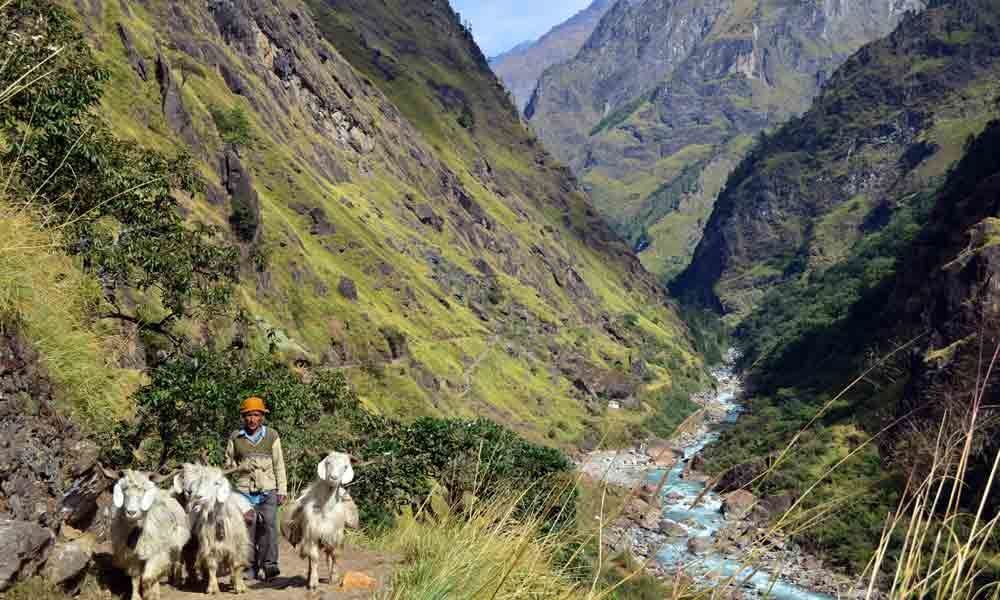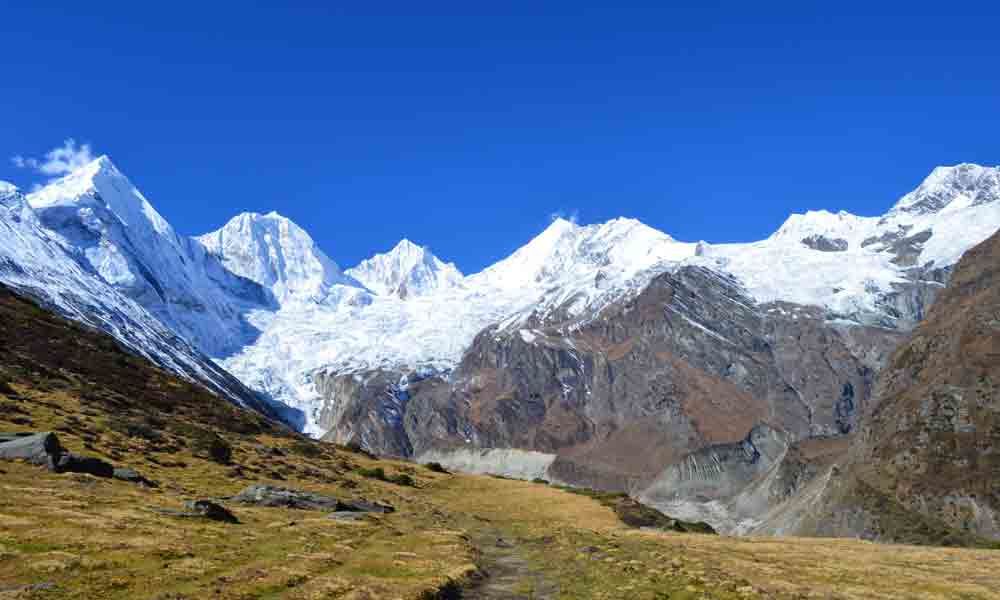Live
- Governor, CM extend Christmas greetings
- Beacons of hope and love born on December 25
- Vajpayee’s legacy lives on as country marks his birth centenary
- Rythu Bharosa to pick best from PM -KISAN scheme
- Medak wears season’s festive look
- TG sets record in fine rice purchase
- Maintaining India’s growth momentum
- Study Reveals Teabags Release Billions of Microplastics and Nanoplastics, Entering Your Body
- Workplace Wonders: Creative Secret Santa Gifts for Colleagues
- Kumbh Mela 2025: Essential Guide to Comfortable and Respectful Attire for Maha Kumbh
Just In
It was quite late in the afternoon. A slanting sun was emitting sharp shining circles of light from above the rocky cliffs dotting the rough road that led straight into the heart of the Darma Valley. At 13,000 feet above sea level, the sun was unusually bright. The famed peaks of the Panchachuli group were still not visible, but I could already feel their august presence. A mild breeze blew as I wolfed down the first proper meal of the day, having been on the road nonstop since morning.
The Panchachuli peaks are the icons of Darma Valley. Almost all the visitors who ever make it to the valley don't leave without witnessing the breath-taking sight of five conical peaks clad in snow. According to local mythology, it was at Darma Valley that the Pandavas cooked their last meal on the five peaks of Panch Chuli (which means five ovens) before leaving for heaven. Starting from left to right, the five peaks represent Bhima, Nakul, Sehdev, and Arjuna. On the far right is Yudhishthira – who is leading the group, as he always did. Together, the five forms an unusual ethereal sight.
The Pithoragarh district of Uttarakhand has four tribal valleys – Darma, Vyans, Chaundas and Johar. Located close to the India-China border, and sharing its borders with Tibet and Nepal, the picturesque Darma Valley is endowed with a distinct charm of its own. Very few tourists make it till here which has left it untouched and ripe for exploration. Guarded by the guardian glaciers and enriched by Darma River, the valley feels like a 19th-century impressionist's dream - aromatic wildflowers bejewelling green meadows, colourful orchids dotting craggy mountains and friendly locals living in a different era altogether. The villagers are typically shepherds and traders, practising age-old mountain agriculture and growing crops like common buckwheat and potatoes.
The valley is almost everywhere green, and occasionally colourful. There are many waterfalls all along the entire trekking route, each seeming more appealing than the other. A visit to the Darma Valley is like paying an ode to the simpler pleasures of life as the best thing to do here is to just sit back and take in the breath-taking natural beauty of the place.
From Dharchula, the last town on the Indo-Nepal border, we drove a further 35 km along the banks of the Dhauli Ganga River leading to the village of Sobla. Here onwards, it is a 40 km trail that passes through Dar, Bungling, Sela, Nagling, Baaling and Duktu/Dantu village in the Darma Valley before culminating at the base of the Pancha Chulli Glacier.
The concept of homestay is fast picking up in the Darma valley as it falls on the trekking route to Pancha chuli glacier. About 100 families in the valley have already started providing home stay facility to the visitors who get unique experience –staying in local village homes and participating in the rhythm of local life, as we did. The families have been trained by the government to provide standard accommodation and sanitation facilities. Dantu, Dugtu, Baling and Nagling are some of the villages with incredible homestay options. Such home stays provide the visitor with an unparalleled opportunity to experience and understand the little-known culture of this remote valley. Each village in the valley has a rich culture of customs and legends. The politeness and hospitality of the villagers are so pleasing that it is sure to touch a visitor's heart. Darma valley has about 12 tribal villages with a total population of 5000. It is rich in tribal culture and heritage, and endowed with snow-covered Himalayan peaks, glaciers, scintillating river views besides dense forests of birch trees, the bark of which was used by sages to write Vedic hymns.
Any trek through the valley, be it short or extended, is sure to be rewarding. We chose a narrow serpentine path that climbed up from Sobla along with the upstream of the gorgeous Dhauli Ganga and passed through Bungling village, a picturesque hamlet perched on a plateau. A collage of natural wonders flanks every bend in the valley.
One night we stayed in the tiny town of Bungling – from where Panchachuli peaks seemed just a stone's throw away. At a house located near our homestay, some ritual was being followed which involved butchering a sheep and offering it to local deities. The meat would then be eaten by the invited family members and guests. We too turned out to be among the guests that day.
The first round of dishes included mutton, cooked over a stone. It turned out to be astonishingly hot and extremely salty. Red coarse rice, vegetables and a more properly cooked meat were also served soon after. When everyone had finished with the food served on their plates, local wine followed and after downing a few sips, everyone got up to sway and dance. The experience satiated not just my cravings, but my entire array of senses.
We, the city-sick people are always on the lookout for remote places untouched by the hands of modernity. The Darma Valley is one such destination. The simple and serene lifestyle of the locals is the ideal antidote to our busy chaotic lives, thereby providing a meaningful escape from the meaningless life of the metros.

© 2024 Hyderabad Media House Limited/The Hans India. All rights reserved. Powered by hocalwire.com









